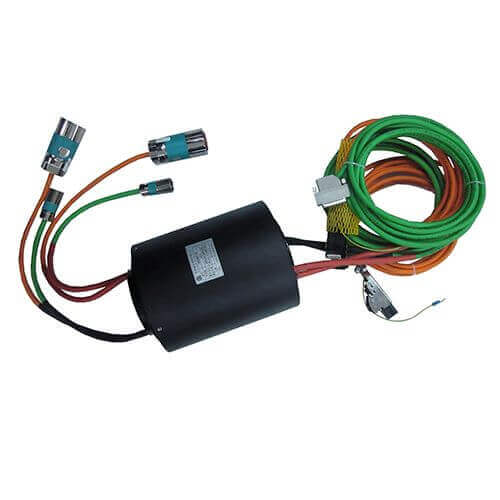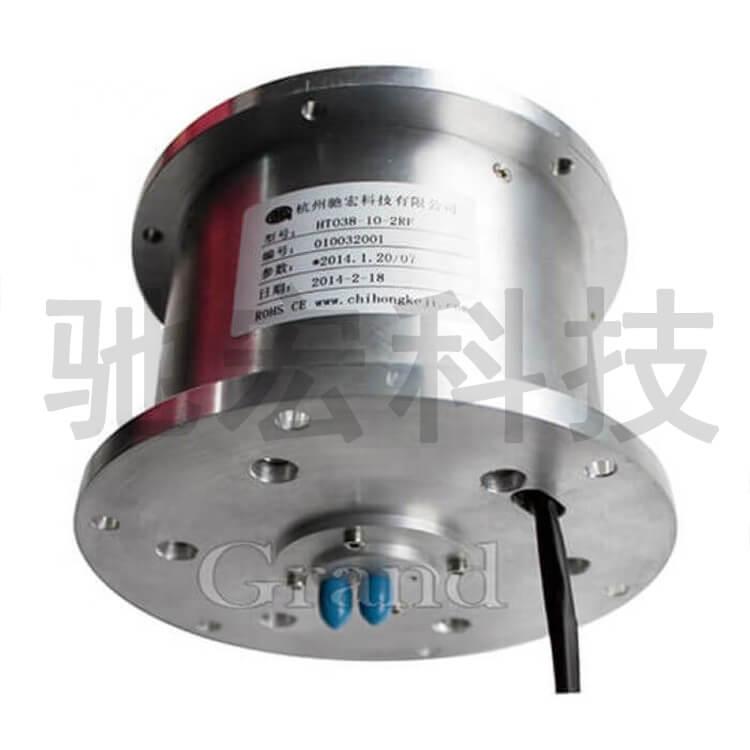Slip rings also known as rotary joints because of their unlimited rotation can carry all kinds of media. A slip ring can rotate 360 degrees and is mainly provided by a slip ring, motor power, and the service life is relatively short. To meet the international demand for high-tech industries, it is necessary to produce a high-performance brush and prototype ring material.
When choosing the waterproof slip ring material, you have to consider several things and choose the best one depending on your specific requirements, mounting dimensions, operating speed, installation space, etc. When weighed with the mercury slip rings, waterproof slip ring has critical applications as well as offers great benefits in intricate systems. As far as the material of the waterproof slip ring is concerned, there are probably many types and specifications. Here is a list of selection points for waterproof slip ring material.

Type of Slip Ring
When opting for the type of slip rings, the temperature issue must be considered, i.e., the speed of the ring itself, the environmental problems around the ring along with the temperature in the electrical contact joules. The reliability of the ring will be affected by the rise in temperature. Also, check the quality of the slip rings in the design and operating parameters. It is best to choose customizable slip rings that can be built to your specifications. Products must be warranted to protect against material and design flaws.
Size
After analyzing the essential materials for a waterproof slip ring, pay attention to the size of the conductive ring. The size of the conductive ring plays a crucial role in determining the durability of the electrical slip ring. The conductive ring is in direct contact with the fixed brush; As a result, they can be subject to friction, which can damage the contact surface. It is said that the smallest conductive ring reduces the risk of possible wear because it has a smaller surface that slides in contact with the fixed brush.
Environmental Considerations
When installing slip rings, consider environmental factors such as humidity, dust, and harsh weather conditions at the installation site. Understanding these factors will influence your choice of the slip ring. Purchasing the wrong slip ring can lead to faster consumption, which may require high maintenance costs.
Brush Type
Carbon graphite materials are used to make a compound brush, which is often mixed with other highly conductive minerals to improve the density of the current. Compound brushes are mainly used for applications requiring high power and speed in motors. The type of monofilament brush, made of precious metals such as gold, is used in applications requiring less energy or speed.
Power and Voltage Requirements
The power required by the system to function optimally must also be considered when choosing a waterproof slip ring. Consider the voltage drops and the current flowing in the loop and give more preference to the energy in the load. It is essential to understand the voltages in the application to ensure that a properly defined rotary electrical conductor is provided and that no malfunctions such as short circuits or mutual interference occur. A good understanding of the voltage requirements allows you to choose the most profitable rotary electrical conductor and best suited to your needs.
Operating Speed
Considering the operating speed is very important as this is one of the significant mechanical parameters. It affects the operation of the whole machine, like the conductive ring at high speed, the number of tracks will be limited. Maintaining the right operating temperature depending on the application is a critical part. Slip rings and conductivity temperature are closely interrelated. Extremely low temperatures can lead to the resistance of the conductive medium while extremely high-temperature results in the melting of some plastic parts.
Humidity
Humidity also affects the mechanical insulation of a slip ring. In a high-humidity environment, high voltage breakdown can result in a short circuit or more serious accident, so the humidity cannot be too high. At the time of purchase, be sure to test the humidity range in the working environment to avoid such incidents.
Contact Material
The contact material of the slip ring plays a very important role. The contact materials must have many remarkable properties, such as wear resistance, resistance to high temperatures, and low resistance when the slip ring needs 24 hours of uninterrupted operation. It is easy to cause aging, damage, and other phenomena, which leads to a weak connection and interrupted transmission of the signal.
Insulation Material
The insulation material that is used in waterproof slip rings plays a vital role, so it is important to select the waterproof slip ring by the insulation material that is used in it. The mechanical resistance of the insulating material used in the slip ring should correspond to, the centrifugal force, the securing force as well and the pressure that results from the functioning of the slip ring. The temperature features of the insulating material must meet the requirements for specific functioning temperatures.
The Material of the Slip Ring
Aluminum is characterized by high rigidity, corrosion resistance, and other properties. Still, the price is higher than the ordinary material so aluminum housing can be used and the rotor cannot use aluminum, because the housing is fixed, so it should not carry the body of the housing while moving the rotor. The rotor housing is not in contact, but the effect of the seal on the slip ring is enormous because the seals are mainly non-metallic materials. Lubricating fluid at a high temperature between the seals and the rotor reduces internal friction and prolongs the service life while improving sealing performance, supported by bearings, which allow a high-speed rotation.
Conclusion
Remember that a waterproof slip ring must be specified according to specific applications and requirements of the industry. When purchasing this product, you need to consider factors such as current, outer diameter, voltage, rotational speed, type of signal, process environment, and size. A thorough evaluation is necessary to make the right choice.
See What We Can Do

